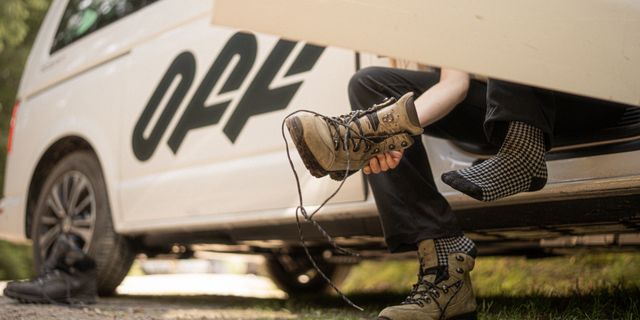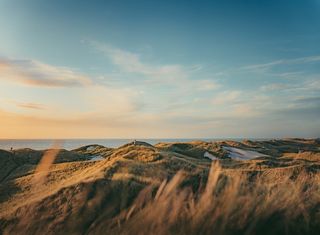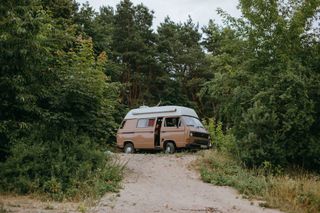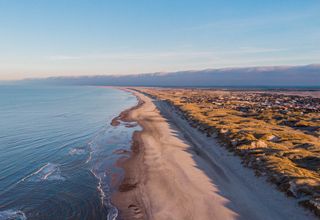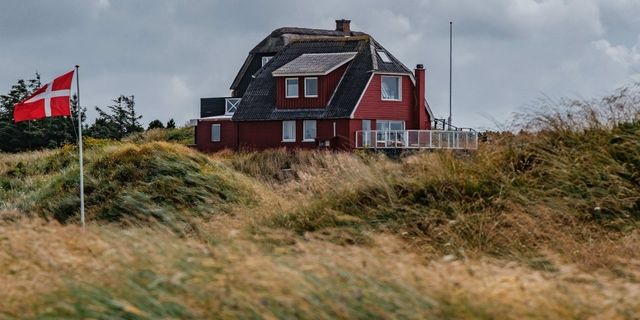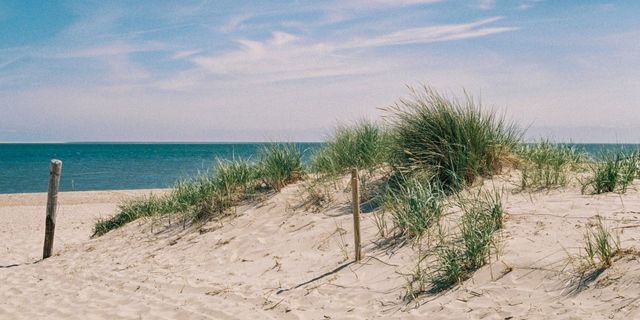Is wild camping allowed in Denmark? Where can I park my camper, motorhome or set up my tent? We'll tell you everything you need to know.
Dunes, heaths and moors run through the landscape and the coasts are inviting you to linger with their many bays and fjords.
This makes Denmark the perfect country for a camping holiday whether in a tent, camper or motorhome. The extensive landscape and sleepy towns encourage the desire for a stay in nature by yourself. And what could be better than enjoying solitude or togetherness in a camper or tent?
Unlike in the rest of Scandinavia, there's no “right to public access” in Denmark. That means you can’t just settle down in the woods for the night. But there’s no need to panic! Denmark offers many opportunities to spend the night outdoors.
Is wild camping allowed in Denmark?
By law, wild camping is not allowed in public spaces in Denmark. Fines can range from €5 to €500. This means on beaches, in the forest, at the roadside, on car parks, in nature reserves … in other words, wild camping is not allowed anywhere. In many places there are even signs pointing this out.
Like everywhere else however, there is a grey area. If you are unfit to drive you may rest at a rest area or car park … but camping is not allowed. That means your chairs and table must remain in the camper. The legal situation regarding resting in car parks is somewhat different in each region and depends heavily on the local police. Often signs indicate the rest areas and sometimes resting is only allowed at certain times of the day and night.
Off Guide
Did you know we have our own travel guide? The Off Guide.
It creates individually planned routes for camping trips. These are tailored to your personal vacation ideas and include locations, campsites, activities and restaurants.
For a road trip without the stress of vacations planning.
P.S.: Your trip still remains flexible, because the Off Guide provides input without fixed bookings.
Where can I park the camper?
In Denmark there is a good compromise between wild camping and regular camping: nature campsites and Ølejrs (island camps).
Nature Campsites in Denmark
Nature campsites are designated areas in forests or nature where camping and bivouacking is allowed. The sites can be used free of charge or for a small fee. One third of these sites also offer a hut for shelter to protect you against wind and bad weather when spending the night. In addition, nature campsites are equipped with a toilet and cold running water. A maximum of 5 – 8 tents may be pitched on nature campsites at once. They cannot be reserved in advance and you may stay there in your tent for a maximum of 2 days. You can find an overview of over 600 nature campsites at
visitdenmark.com.
Camping in nature and forests
Overnight camping is also permitted in selected forest areas – in fact, there are 201 forests in total! Popular forest areas are Blokhus Plantage, Vigsø Plantage or Års Skov in North Jutland, the forest Solbjerg Skov near Aarhus, Sollerup Skov on Funen or Grønnæsse Skov near Hundested in Zealand. As the nature is very extensive you are often by yourself and it almost feels like legal wild camping. The Danish Agency for Nature Management gives a good overview of overnight accommodation in nature on its website:
de.naturstyrelsen.dk.
Caution: Motorised vehicles - which include campers and motorhomes - are generally not allowed to stay on a nature campsite or in the forest!
Ølejr (Island camp)
If you want to camp in the traditional Danish way you can stay at Ølejr, the so-called island camps. These are very popular and a big part of Danish summer and are comparable with tent camps. You can find them on various Danish islands and they are often themed around folk music, sports or relaxation. You can spend the night there in a tent and they are open to everyone: family, friends or individual travellers. So are you ready for a traditional Danish summer?
Campsite and private pitches
In addition to these alternatives to wild camping, you can of course also choose the traditional way and stay on a campsite. Overnight stays on small campsites or on private property areas with the owner’s permission are also a possibility which gives you more of an individual camping feeling.
Is wild camping dangerous in Denmark?
No. As in all Scandinavian countries the crime rate in Denmark is low. So you don’t have to be afraid of attacks or troublemakers.
If you're going to be outdoors for a long time you should bring a first aid kit with you … You will need a plaster more often than you think. It is also advisable to bring mosquito repellent and a soothing ointment as there are a lot of mosquitoes in the sand dunes.
What should you look out for?
Most of us camp for the love of nature and the incomparable feeling of freedom. Unfortunately, in many cases this harms both nature and the local economy. Here are a few tips that you should keep in mind when wild camping.
Leave the place as clean as you found it!
Be careful not to disturb animals and nature through noise or fire!
Dispose of gray water at designated stations!
Be considerate of residents and fellow campers!
Support the local tourism and give back to your vacation destination!
Here are a few more tips and advice on how to prepare for wild camping and camping in general in Denmark:
- Be aware of the bird breeding season (March to August). During this time, camping in certain areas and along certain coasts may be restricted.
- Bivouacking, i.e. sleeping without a tent, is allowed in most places in Denmark.
- Due to its proximity to the sea the country is very popular among anglers. A licence is required for fishing but you can also get one locally without taking an exam.
- Campfires at the beach are allowed as long as they are out of sight of houses. There are many designated fireplaces in the forest.
- As everywhere, you should always take your rubbish with you and leave the site just as you found it.
Conclusion
If you're travelling in Denmark you don’t have to choose between campsites and wild camping. Nature campsites and island camps offer a good middle course; you're in nature but also have the most important infrastructure and get to experience the culture and hygge lifestyle at first hand.
